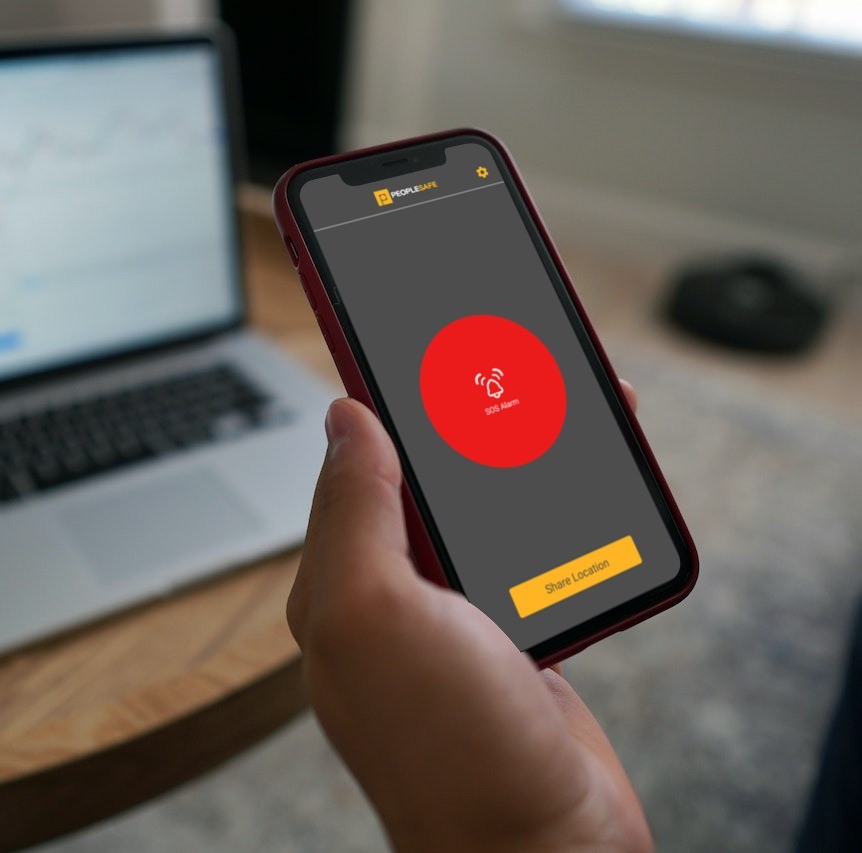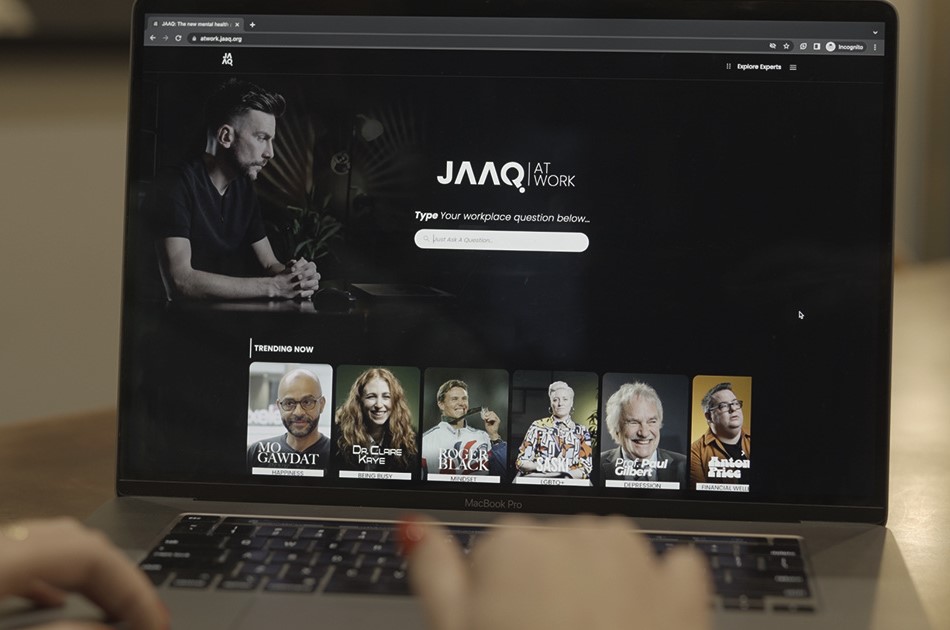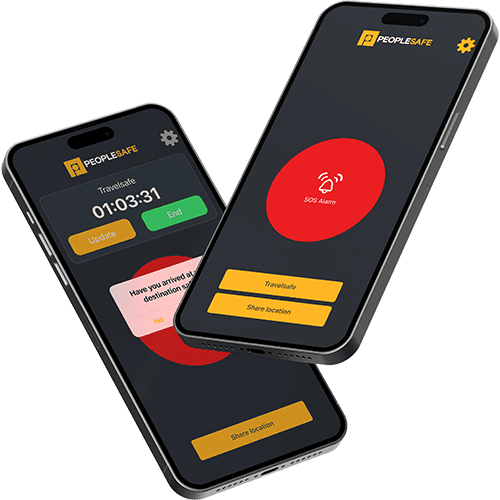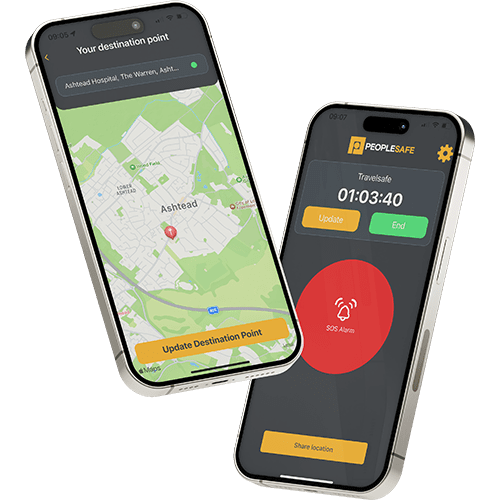The Future of Workplace Wellbeing
The conversation around employee wellbeing is evolving as businesses face growing pressure to respond to rising rates of stress and burnout. Mental health challenges are now the leading cause of long-term sickness in the workplace, pushing wellbeing to the top of boardroom agendas.
But as businesses explore new ways to support their people, one thing is becoming increasingly clear: the future of workplace wellbeing depends on more than surface level perks and policies. It requires a fundamental shift in how we think about what employees need to feel safe, supported and able to thrive at work.
The Growing Challenge of Employee Wellbeing
According to 2024 data, nearly 80% of employees are experiencing moderate to high levels of stress, and one in four UK workers say they feel unable to cope with that pressure. These numbers highlight a stark reality — too many employees are struggling, and existing wellbeing initiatives are often falling short of meeting their needs.
But to fully understand the problem, we need to look beyond traditional workplace pressures. For many employees, stress doesn’t just come from tight deadlines or demanding workloads. It comes from the hidden pressures of their environment — walking to their car alone after a night shift, facing abuse from the public, struggling with mental health challenges, or feeling isolated while working from home.
That’s why to be truly effective, wellbeing strategies need to consider the full picture of employees’ lives. This includes where they work, the risks they face day to day, and how easily they can access support when they need it.

The Need for a Flexible Approach
Over recent years, the rise of hybrid and remote working has reshaped how, when and where people work, which means it’s also reshaping how businesses need to think about employee wellbeing. Traditional support models built around physical workplaces no longer apply in the same way, and wellbeing strategies must now adapt to meet people where they are — whether that’s in an office, at home, or in the field.
The shift towards hybrid and remote working has given employees greater flexibility and autonomy, but it has also led many to report feeling isolated, less visible, and disconnected from their team.
For those working on-site, the challenges are different. They may feel more embedded in the culture but often have less control over their schedules and face greater exposure to physical and emotional risk, from lone working to the risk of violence and abuse when working with the public.
These differing experiences highlight the importance of creating wellbeing strategies that are flexible enough to address the unique needs of both remote and on-site workers. Speaking with Ryan Hopkins, Chief Impact Officer – JAAQ, Strategic Wellbeing Lead at Bupa & Workplace Wellbeing Author, on this issue, he explained:
Hybrid Wellbeing Interventions
With this in mind, one of the biggest challenges for businesses in 2025 and beyond will be ensuring that their wellbeing strategies work for everyone, regardless of whether they’re working on-site, remotely, or in hybrid environments. The tools and technology to support these varied working models already exist, but the key challenge is integrating them seamlessly into employees’ daily workflows.
As Ryan Hopkins suggests, businesses should approach hybrid arrangements with flexibility “One-size-fits-all hybrid models fit none. The proximity needs for individual teams, cross-functional teams, and customers will vary, so hybrid arrangements need to be flexible and adapt to each team’s specific requirements.”
For remote workers, this could mean embedding wellbeing support into tools they already use, like Microsoft Teams or Slack. On-site workers, on the other hand, may benefit from QR codes on payslips or signage in break rooms, ensuring support is available when they need it.
The key is ensuring wellbeing interventions are visible, timely, and accessible at employees’ most frequent touchpoints, whether digital or physical. By integrating support where employees are already spending their time, businesses can make wellbeing a seamless part of their workday, maximising its influence.

The Impact of Prioritising Safety
Another critical factor in creating a supportive and effective wellbeing strategy is safety, both physical and psychological.
The reality is that employees cannot engage meaningfully with any wellbeing initiative if they feel unsafe in their working environment. As Ryan Hopkins puts it, “There is no wellbeing without safety. It is an absolute pre-requisite, only on solid foundations of physical and psychological safety can wellbeing begin to be considered and addressed.”
In fact, employee safety is one of the most important elements of any effective wellbeing strategy. As Ryan shares:
For employees, feeling unsafe — whether it’s through exposure to physical risk, the threat of violence, or an environment that stifles open communication — can severely undermine any efforts to improve their wellbeing. This is especially true in high-risk industries or for employees working in isolation.
Psychological safety is equally important. Employees need to feel safe to speak up, share concerns, and know that their mental health will be supported without fear of judgment or repercussions in order for wellbeing initiatives to succeed.

Leveraging Technology to Address Wellbeing Challenges
As businesses confront these evolving challenges, technology has emerged as a powerful tool to provide meaningful support.
From AI-powered mental health tools to personal safety apps and wearable tech, these solutions have the power to provide scalable, personalised, wellbeing support that goes beyond what traditional methods could offer. Some emerging technologies we’ve seen gaining traction include:
1. Proactive Mental Health Support Tools
One of the most significant trends in workplace wellbeing technology is the shift towards proactive mental health support. With workers’ comfort in discussing their mental health with senior leaders dropping significantly, companies are now using technology to provide vital, proactive support to employees facing mental health challenges, rather than waiting for employees to reach out for help.
AI-powered chatbots are one example of this shift, offering employees access to mental health support through self-guided activities, therapeutic conversations, or guidance to appropriate resources. These tools are designed to be accessible and low-pressure, allowing employees to engage with support at their own pace. Earlier this year, the first randomised trial of a generative AI chatbot for conditions like depression, anxiety, and eating disorders showed significant improvements in participants’ symptoms, suggesting that, with the right safeguards in place, AI could help expand access to mental health care.
However, while technology offers huge potential for improving employee wellbeing, it must be used responsibly. As Ryan Hopkins cautions, “The opportunity is huge, to democratise care, to lean into prevention (rather than waiting to fix), but it will not be served without risk”
Already, concerns have been raised about the safety of AI-driven wellbeing interventions, especially when they replace professional support. In some cases, these tools have provided harmful advice, highlighting the need for caution.
2. Wearables and Data-Driven Wellbeing
Wearables and health tracking technologies have also become key tools in the workplace wellbeing space. Some businesses are now offering devices that monitor fitness, sleep, stress, and more as part of their wellbeing programmes. These trackers help employees better understand their own health and make informed lifestyle changes, encouraging healthier habits through real-time, personalised insights.
Some wearables go beyond general wellbeing, helping users monitor vital signs like heart rate, blood pressure, and blood glucose. This can support employees in managing conditions such as diabetes, leading to improved physical health and a greater sense of wellbeing by reinforcing that their employer is taking their health seriously.
3. Personal Safety Technology
In line with the increasing recognition of the link between safety and mental health, more businesses are turning to safety technologies to enhance the overall wellbeing of employees. Solutions like Peoplesafe are designed to provide employees with peace of mind, especially those who work alone, in remote locations, or face unpredictable risks.
Peoplesafe offers features such as the ability to raise an SOS alarm and access immediate help with a single press of a button, along with regular check-ins throughout the day to confirm safety. It also includes tools designed to provide peace of mind during journeys and commutes, helping employees stay safe and reducing the mental strain of feeling unsafe, particularly when working in isolation.
Because it’s app-based, these solutions fit seamlessly into tech that employees are already using, making it easy to access, without adding complexity to their routines. This ease of use is key to adoption, helping more employees feel confident in reaching out for help when they need it.
By addressing safety fears and feelings of isolation, employers remove a major barrier to wellbeing, enabling employees to focus on their health and productivity without the added strain of worrying about their safety.

4. Expert-Backed Wellbeing Education
As businesses increasingly focus on reducing stigma and promoting mental health awareness, platforms dedicated to mental health education are also becoming key tools for empowering employees. But to be effective, these interventions must cater to the broad and intersectional needs of a diverse workforce, because what works for one employee may not work for another.
One example is JAAQ (Just Ask A Question), a platform that offers over 140 mental health and wellbeing topics, from menopause to eating disorders. By providing employees with easy access to confidential resources, these platforms create a confidential, safe space for employees to explore their concerns.
As Ryan Hopkins notes, employees often have concerns they’re hesitant to bring up in the workplace. “Organisations are often shocked by the range of questions being asked ‘behind closed doors.”
But platforms that make mental health and wellbeing topics accessible and non-judgemental can help employees feel seen, understood and supported, having a significant impact on their wellbeing.
There’s also JAAQ at Work — a workplace-focused version of the platform covering topics like burnout, leadership, neurodiversity, and DEI, delivered by experts. This can be especially valuable for managers, HR teams, and employees navigating sensitive issues impacting their wellbeing.
One organisation putting this into practice is NatWest, where employees have asked over 52,000 questions across 100+ topics since implementing JAAQ. By offering expert-led support in a safe, engaging space, the platform has helped build a stronger sense of connection across the business and contributed to a substantial 6.9% reduction in mental health-related absences.

Looking Ahead to the Future
While these developments mark significant progress, there’s no doubt that workplace wellbeing will continue to evolve. And as businesses look ahead to the future of employee wellbeing, it’s clear that technology will play a central role in making support more accessible and relevant.
Notably, with the rise of AI and task automation, there’s a growing potential to free up time and reduce workload pressures. Studies show that by integrating large language models, 56% of tasks could be completed significantly faster without compromising quality. For employees working long hours, often those most likely to drop off from wellbeing interventions, this creates a clear opportunity to create space for meaningful work and self-care.
These interventions aren’t just beneficial for individuals. The business case is equally strong, as companies that embed wellbeing into their culture see up to 20% higher productivity and 10% better retention.
With this in mind, the future of workplace wellbeing will undoubtedly see a growing trend of organisations leveraging new technologies to create more personalised and proactive support systems, ensuring that every employee’s unique needs are met.







